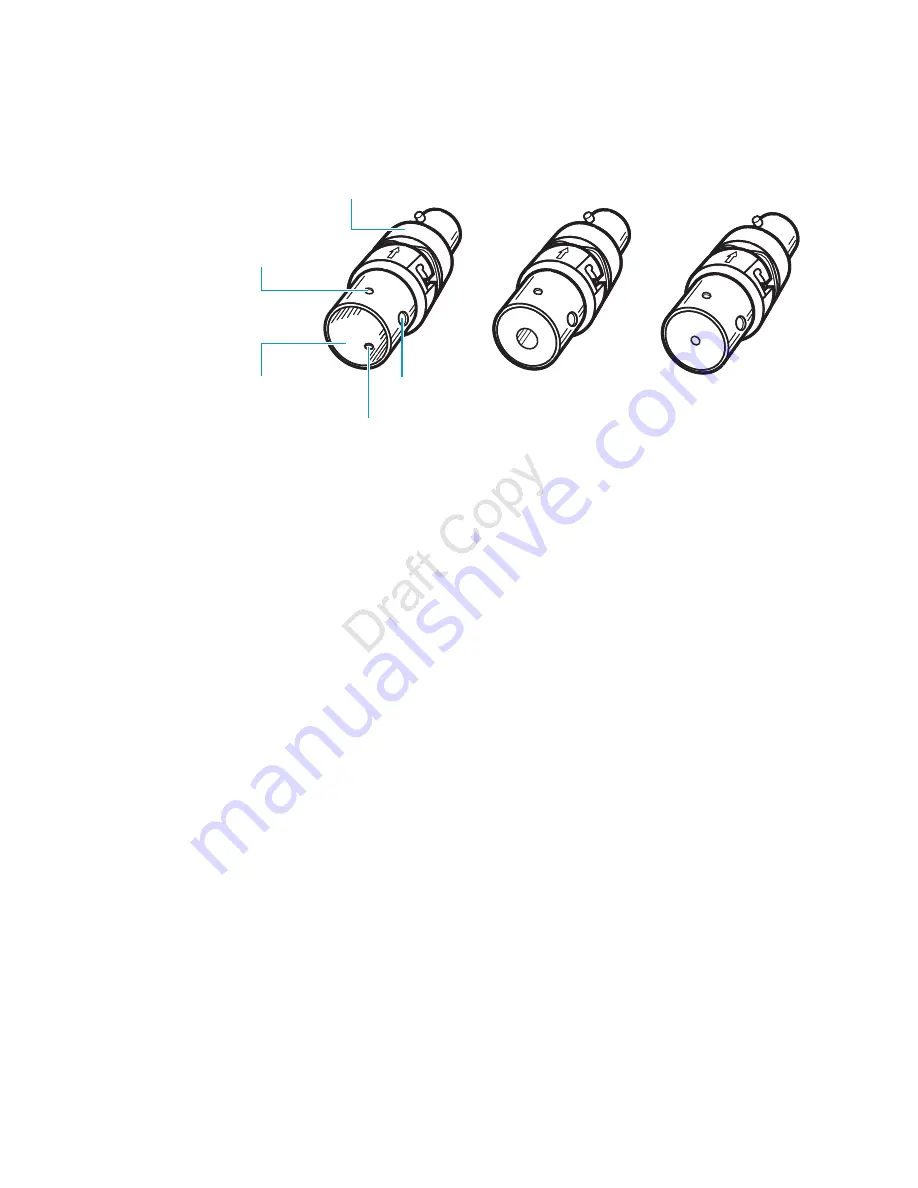
2
Functional Description
Mass Spectrometer
28
TSQ Quantum XLS and TSQ Quantum GC User Guide
Thermo Scientific
Figure 15.
EI (left), closed EI (center), and CI (right) ion volumes and holders
Cartridge heaters heat the ion source block and lens assemblies to minimize the rate at which
deposits form on the ions source block, ion volume, and lens assemblies. The ion source block
is also heated to assist in the rapid temperature equilibration of the ion source block and ion
volume after the filament is turned on. In EI mode, the ion source is typically maintained at
150
o
C to 220
o
C. However, lower or higher temperatures are sometimes used for certain
applications. In the CI mode, the ion source is typically maintained at 180
o
C to 200
o
C. The
ion source heater is feedback controlled.
The filament assembly, positioned in a recess at the top of the ions source block, contains the
filament, reflector, and electron lens. The filament is a rhenium wire that is electrically heated
to produce electrons by thermionic emission. The reflector repels electrons emitted by the
filament away from the filament toward the ion volume. The filament and its reflector are
maintained at a negative potential relative to the ion volume. The electron lens prevents
positive ions from traveling up the electron beam. In turn, this prevents positive ions from
leaving the ion volume through the electron entrance hole. The difference in potential
between the filament and the ion volume determines the electron energy.
Two permanent magnets are held in a magnet yoke in the proper position above and below
the ion source block. The permanent magnets collimate the electron beam and cause the
beam to spiral through the ion volume. This ensures optimum ionization of the sample.
Two ion source len assemblies, called the L1, L2, and L3 lens assembly and the Q00
quadrupole lens assembly, extract the ions formed in the ion source and transmit them to the
ion optics. The lens L2 voltage is mass dependent. The rods of the Q00 quadrupole contact
the rods of the Q0 quadrupole and share their rf and dc voltages.
In positive ion mode, the lenses are adjusted to a negative potential, and in negative ion mode,
the lenses are adjusted to a positive potential. The arrangement of the lenses and their spacers
enables quick and efficient pump-out of the ion source.
Ion volume
holder
Electron
entrance
hole
Ion exit hole
(front)
Electron
exit hole
GC effluent, CI gas, calibration gas
entrance hole
















































